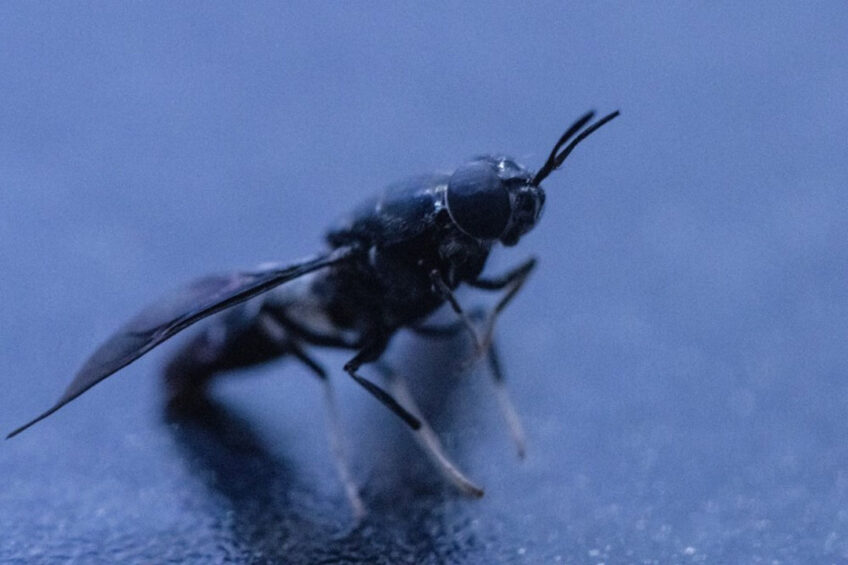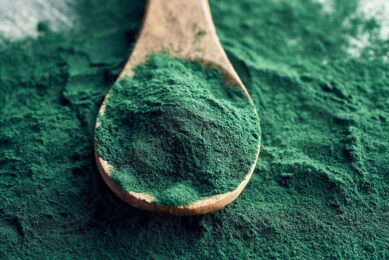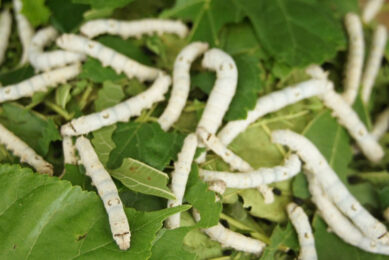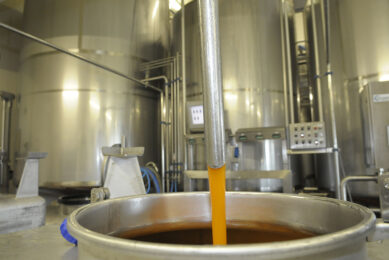Protein alternatives support net zero, land management and sustainability

The climate for farming insects is fantastic, supports net zero aims, will help provide a sustainable circular economy, and adds to the rich tapestry of UK farming.
Will Bisset, Entocycle business development manager, said the company was currently building a plant in Scotland, where 1.7 million tonnes of food is wasted annually.
Speaking at the NFU’s annual poultry research seminar, Bisset said the firm will be using black soldier flies, which are able to convert food waste into protein in just 12 days. “Black soldier flies are incredible bio-converters taking pretty much any organic waste and converting it into a real high-quality protein.”
A safe alternative form of protein
Black soldier fly eggs are given waste from food growers, brewers and distillers and in less than 2 weeks the larvae consume the waste, grow into adults from which the company extracts co-products, such as protein, lipids and fertiliser for use in pet food and potential use in the aquaculture and animal feed sectors as a safe alternative form of protein.
On one of its farms, Entocycle plans to produce 2,200 tonnes of larvae and 2,200 tonnes of frass (a potential soil enhancer given the current fertiliser price) per year.
100% organic and regional feed for monogastrics in Europe
Dr Lindsay Whistance, The Organic Research Centre, sustainable feed and planting design for organic poultry ranges, spoke about the pan-European OK-Net EcoFeed project, which looked at working towards 100% organic and regional feed for monogastrics in Europe.
Among the conclusions when feeding poultry and pigs 100% organic and regionally produced feed, protein and specific amino acids, was that this is a challenge but potential approaches could resolve the issues. Whistance said the possibilities for combinations of regionally grown feed given to low-yielding breeds through different strategies were many. A total of 18 trials in 8 European countries were established, lasting 3 years and shared across the platform.
Feeding nettles to laying hens
Among the trials discussed by Whistance was a German initiative that looked at using nettles for laying hens in 2 feeding trials. Dried nettles were used in proportions of 10% (trial 1) and 5% (trial 2) in the respective farm rations, replacing 5% of the existing protein source. In trial 1, the milled grass was additionally reduced by 5%. The fodder was prepared on farms with mobile grinding and mixing equipment and the feed was fed ad libitum to almost 300 laying hens by automatic feeders. The bird genetic users were Sandy (trial 1) and Lohmann Brown (trial 2). The feeding duration was 10 days for trial 1 and 26 days for trial 2 with the aim to reduce the amount of purchased protein concentrates.
The results found that the hens accepted the changed rations, and feed intake remained stable at 120-130g/hen/day. Faeces were solid and laying performance was constant (80% for trial 1 and 88% for trial 2). Egg quality characteristics remained unchanged, but feed values were worse than expected due to the high stalk content, the cost was prohibitive and nettles are not included in the list of authorised feedstuffs so using them on a larger scale is currently not appropriate.
Camelina in laying hen feed
An Italian project looked at using Camelina in laying hen feed as an alternative protein to soya bean cake, which contains interesting types and amounts of omega 3 fatty acids and tocopherols. Camelina cake, on average, has 34% protein and 10% fat with the protein including 38% of essential amino acids with 2.65% of methionine.
Camelina can be included in the laying hen diet up to a maximum of 10%. In the practical trial, 3.5% of camelina cake replaced the same amount of soya bean cake and 1.5% of camelina oil was also added to the feed. Later trials supported the possibility of increasing the cake percentage and, with specific varieties characterised by low anti-nutritional factors, potentially no limits need to be set.
The trial indicated that camelina cake and oil can be fed through the entire productive life cycle of the hens with no effects on laying parameters, higher omega 3 content and longer productive life of hens and enhanced animal welfare.
Sprouted wheat and vetch seeds
Another trial looked at sprouted wheat and vetch seeds, testing them for feed value including amino acid profiles. Trypsin inhibitor activity was also assessed in the vetches to assess changes in anti-nutritional factors. Sprouted seeds were then fed to layers, who preferred vetch sprouts. There was no loss of nutritional value due to sprouting although starch is converted into sugars in the process. Feed value starts to drop on day 5. Crude protein and amino acid profiles did not change with sprouting.












